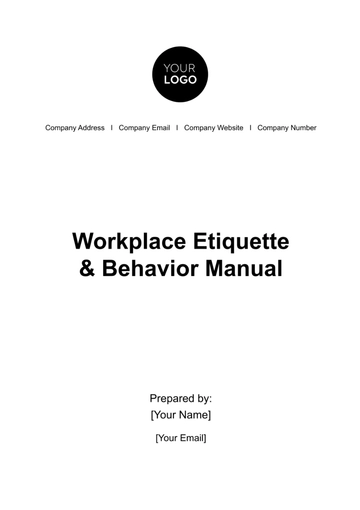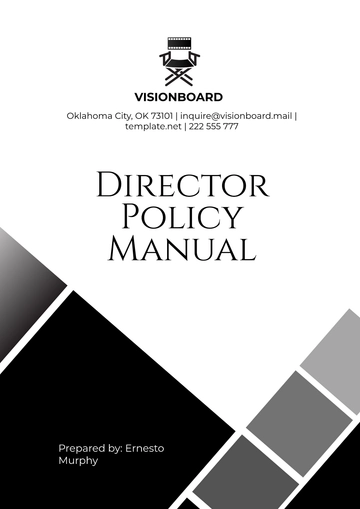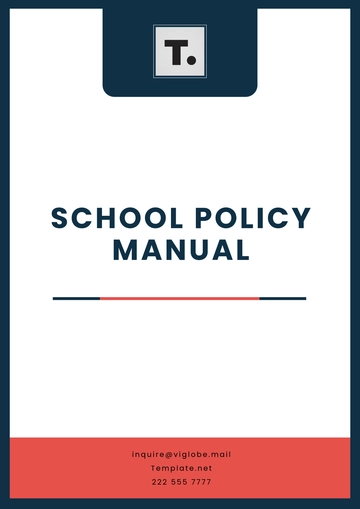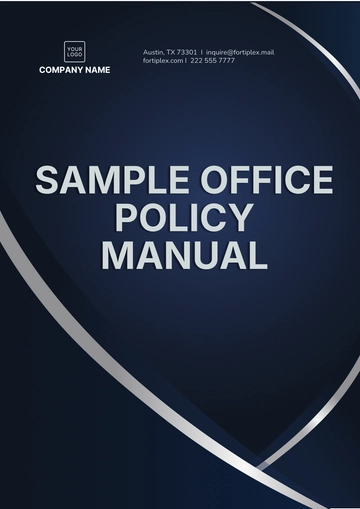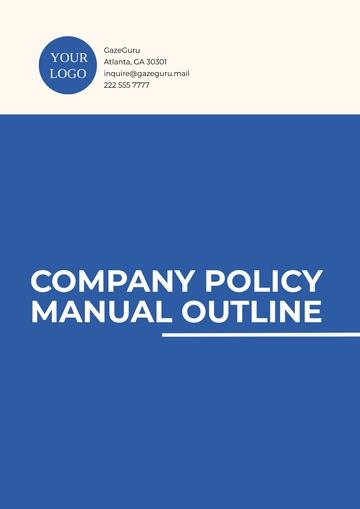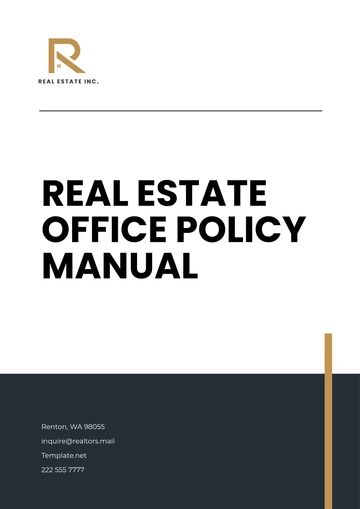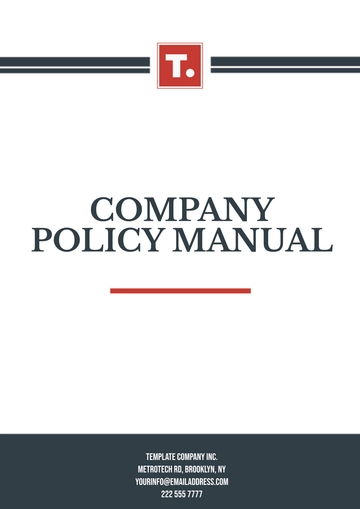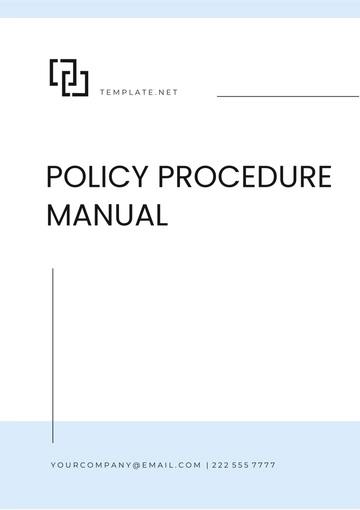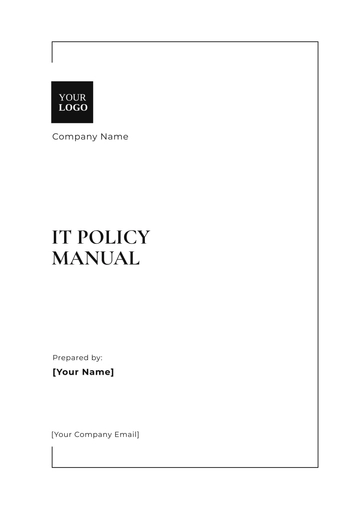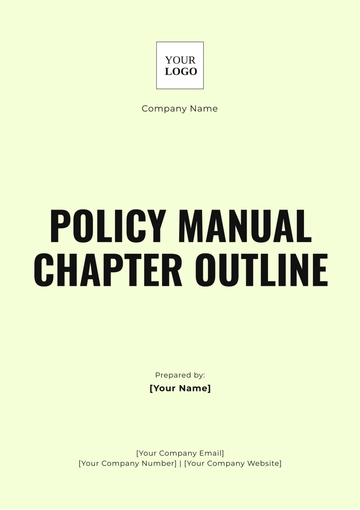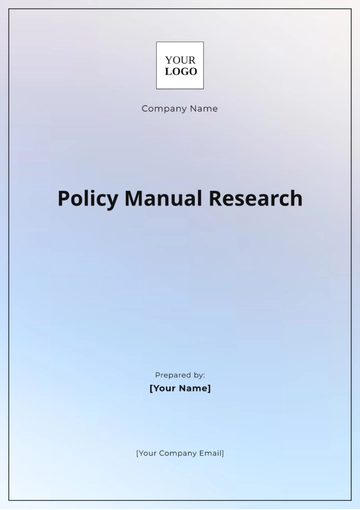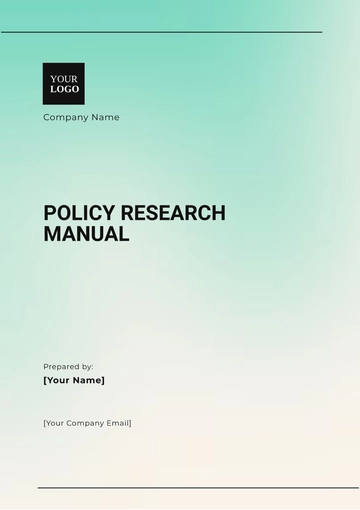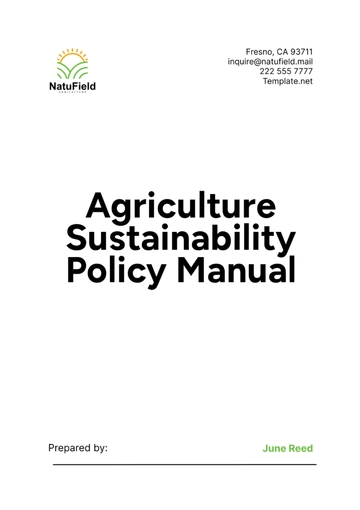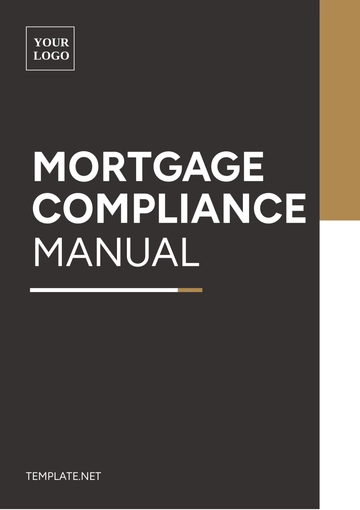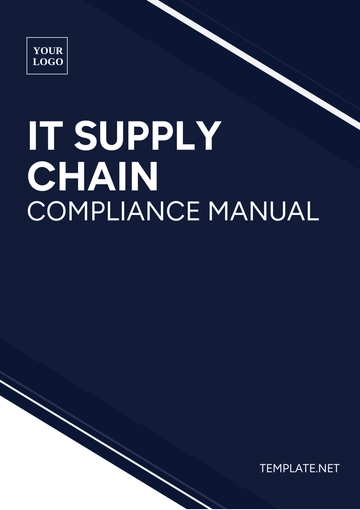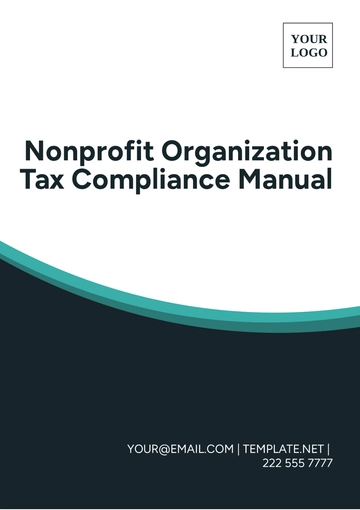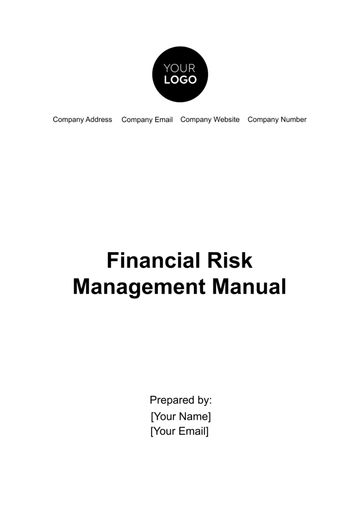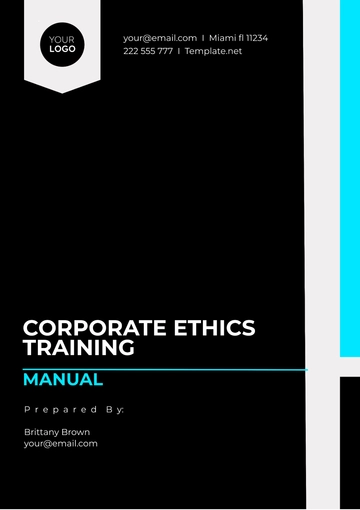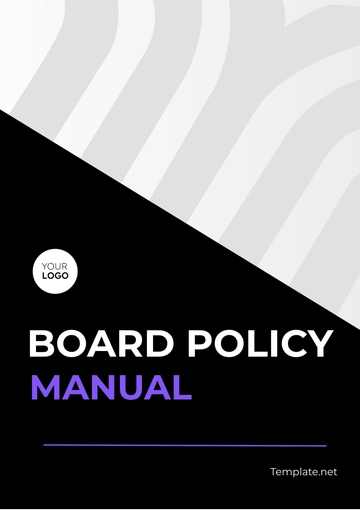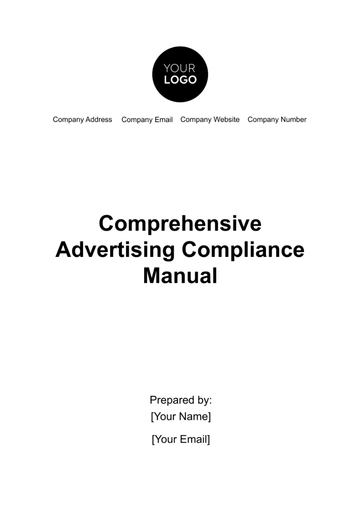Free Administration Vendor Policy and Procedure Manual
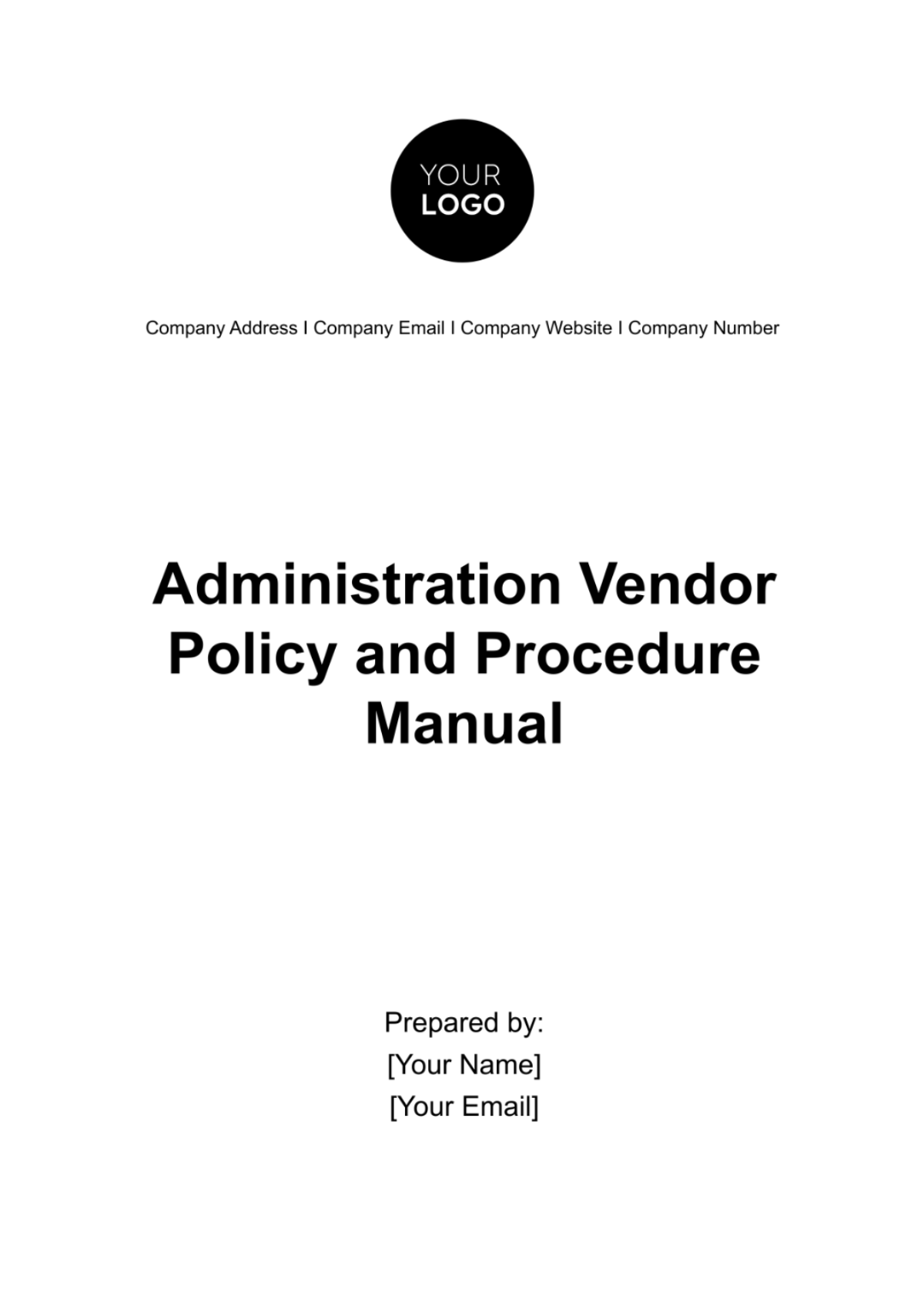
1. Introduction and Purpose
In this guide, we aim to provide a comprehensive overview of the purpose, scope, and significance of nurturing and maintaining functional and effective relationships with vendors in relation to the administrative functions of [Your Company Name]. The ultimate goal of this manual is to cultivate an understanding and acceptance of the best practices in the realm of vendor management.
By providing a standardized set of procedures, we aspire to create a consistent approach towards our vendor management activities throughout the different sectors of our company. This in turn will enhance efficiency and efficacy in our dealings with vendors, which are vital for the smooth functioning of our operations.
2. Vendor Selection and Evaluation
In this section, we delineate the meticulous process of selecting and evaluating vendors, ensuring alignment with our company's objectives and standards. The process encompasses comprehensive vendor assessment, rigorous due diligence, and systematic approval procedures. Below is a table outlining the sequential steps and their descriptions:
Step | Description |
|---|---|
1. Assessment | Evaluating vendor's capabilities and financial stability. |
2. Due Diligence | Carrying out comprehensive business and legal checks. |
3. Approval | Final selection based on alignment with company needs and standards. |
3. Contract Management
Contract management is a critical aspect of vendor relations, ensuring clarity, compliance, and accountability in all contractual agreements. This chapter outlines the detailed procedures to be followed when negotiating, drafting, reviewing, and managing contracts with vendors.
Contract Negotiation: This section details the process of negotiating mutually beneficial terms and conditions with vendors, including pricing, deliverables, and performance metrics.
Contract Drafting: Here, the focus is on creating comprehensive contract documents that accurately reflect the agreed-upon terms and conditions, leveraging legal expertise as needed.
Contract Review: A thorough review of contracts by relevant stakeholders ensures accuracy, compliance with company policies, and alignment with legal requirements.
Service Level Agreements (SLAs): This subsection clarifies the expectations and responsibilities of both parties regarding service delivery, response times, and quality standards.
Contract Renewal Procedures: Establishing clear procedures for periodic contract renewals ensures continuity of services and allows for adjustments based on changing needs or market conditions.
4. Vendor Performance Management
Vendor performance management is a crucial aspect of maintaining high standards and efficiency in our vendor relationships. This section outlines the systematic method for monitoring, measuring, and evaluating vendor performance to ensure alignment with our company's expectations and objectives.
Key Performance Indicators (KPIs): We establish clear KPIs that reflect the critical aspects of vendor performance, such as quality, timeliness, cost-effectiveness, and customer satisfaction.
Performance Reviews: Regular performance reviews provide an opportunity to assess vendor performance against established KPIs, identify strengths, areas for improvement, and any deviations from agreed-upon standards.
Corrective Actions: In instances where vendor performance falls below expectations or contractual obligations, this subsection details the process for initiating corrective actions. This may include providing feedback, implementing improvement plans, or, if necessary, contract renegotiation or termination.
5. Vendor Communication and Relationship Management
At [Your Company Name], clear and effective communication with our vendors is paramount to achieving mutual success. This section defines the channels, protocols, and best practices for fostering transparent communication, resolving issues promptly, and cultivating positive relationships with our vendor partners.
a. Communication Channels
Primary Communication Channels: Describes the primary modes of communication, such as email, phone calls, or virtual meetings, to facilitate regular interactions with vendors.
Emergency Contacts: Provides contact information for urgent or critical situations, ensuring timely resolution of issues.
b. Communication Protocols
Response Time Expectations: Establishes guidelines for response times to vendor inquiries or concerns, promoting timely communication and efficient problem-solving.
Escalation Procedures: Outlines escalation paths for resolving escalated issues or disputes, ensuring swift resolution and minimal disruption to operations.
c. Issue Resolution
Issue Reporting Process: Details the process for reporting vendor-related issues or concerns, including documentation requirements and responsible parties.
Resolution Mechanisms: Describes the steps involved in addressing and resolving vendor issues, including collaboration with internal stakeholders and vendors to implement effective solutions.
d. Relationship Building
Regular Vendor Meetings: Encourages scheduling regular meetings with vendors to discuss performance, upcoming projects, and strategic alignment.
Feedback Mechanisms: Provides avenues for soliciting feedback from vendors and incorporating it into ongoing relationship management efforts.
6. Vendor Compliance and Risk Management
In this section, we address the critical aspects of compliance and risk management as they pertain to our vendor relationships. The table below outlines the compliance requirements, risk assessment, and mitigation strategies relevant to vendor activities, including data security and business continuity planning.
Compliance Requirements | Risk Assessment | Mitigation Strategies |
|---|---|---|
Data Security Regulations | Identify potential risks | Implement encryption protocols, regular security audits |
Regulatory Compliance | Assess impact on operations | Ensure vendors adhere to relevant regulations |
Business Continuity Planning | Business Continuity Planning | Develop contingency plans, diversify vendor portfolio |
7. Vendor Onboarding and Offboarding
Vendor onboarding is a crucial step in establishing successful partnerships. This section delineates the structured process through which selected vendors are onboarded into our ecosystem, ensuring clarity and alignment from the outset. Additionally, the procedure for vendor offboarding, including contract termination and transition planning, is comprehensively discussed to facilitate seamless transitions and mitigate potential disruptions.
Vendor Onboarding Process
Documentation and Agreements: Details the required documentation and agreements necessary for vendor onboarding, including contracts, service level agreements (SLAs), and compliance forms.
Training and Orientation: Outlines the training sessions or orientation programs provided to vendors to familiarize them with our company's policies, procedures, and expectations.
Vendor Offboarding Process
Contract Termination: Describes the process for terminating vendor contracts, including legal considerations, notification requirements, and post-termination obligations.
Transition Planning: Discusses the development of transition plans to smoothly transfer responsibilities and assets to alternative vendors or internal resources.
8. Invoice and Payment Processing
Efficient invoice and payment processing is essential for maintaining smooth vendor relations and financial management. This chapter outlines the company's procedures for receiving, verifying, and processing vendor invoices, ensuring compliance with financial controls and budgetary guidelines.
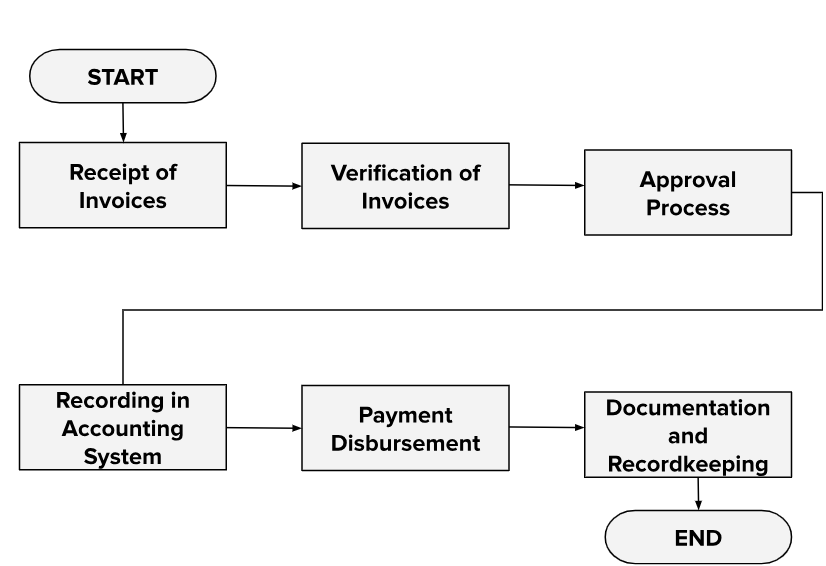
9. Confidentiality and Data Protection
At [Your Company Name], we prioritize the stringent protection of sensitive data shared with vendors. Our policies and procedures are meticulously designed to uphold confidentiality and comply with privacy laws and security standards. We employ encryption protocols, access controls, and regular audits to mitigate risks and ensure the integrity of shared information. By fostering a culture of vigilance and accountability, we uphold the trust of our clients and stakeholders while safeguarding our company's assets against potential threats and vulnerabilities.
10. Escalation Procedures and Reporting
This section outlines the structured escalation procedures and reporting mechanisms for addressing vendor-related issues promptly and effectively. Clear channels of communication and defined escalation paths ensure swift resolution and minimize disruptions to operations, fostering transparency and accountability in vendor management.
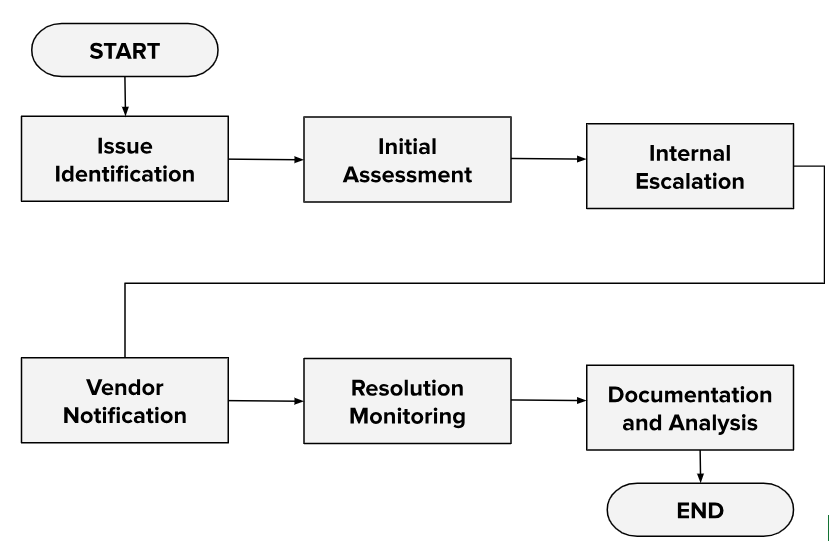
In adhering to these procedures, we ensure timely resolution of vendor issues, maintaining operational continuity and fostering strong vendor relationships.
For any further inquiries, do not hesitate to reach out to us at [Your Company Email] or [Your Company Number]
- 100% Customizable, free editor
- Access 1 Million+ Templates, photo’s & graphics
- Download or share as a template
- Click and replace photos, graphics, text, backgrounds
- Resize, crop, AI write & more
- Access advanced editor
Establish clear vendor relations with the Administration Vendor Policy and Procedure Manual Template from Template.net. This editable and customizable template sets forth your organization's guidelines on vendor engagement, selection, and management. Ensure consistent and fair vendor practices, easily modifiable in our Ai Editor Tool, to uphold your operational standards and ethics.


